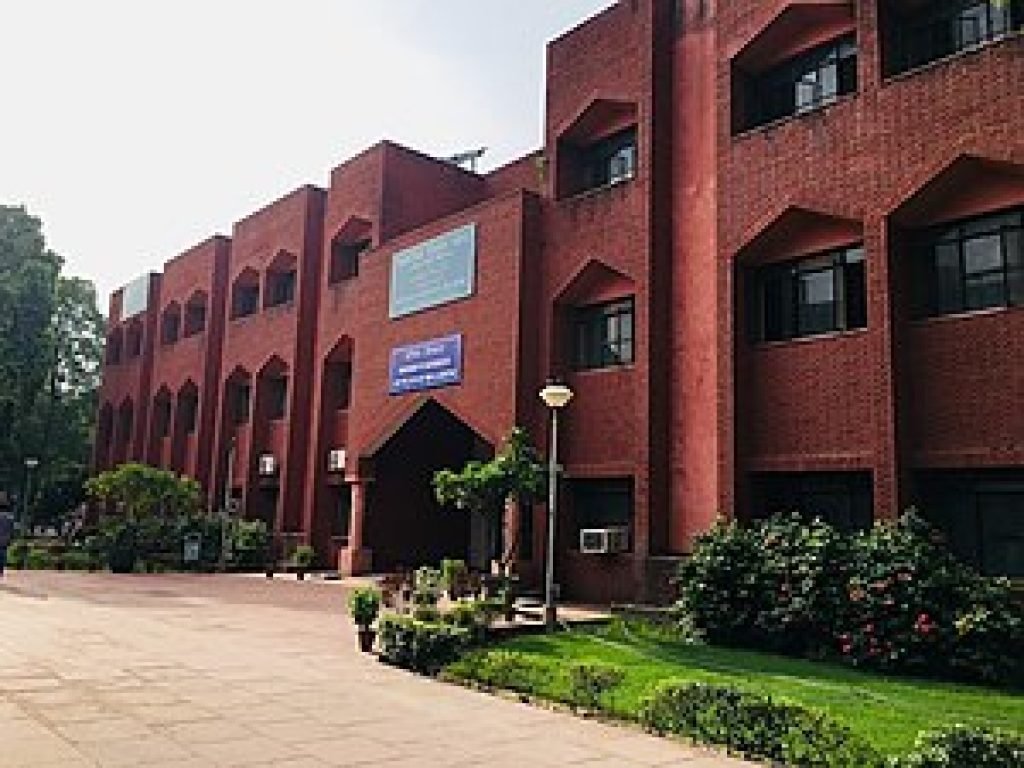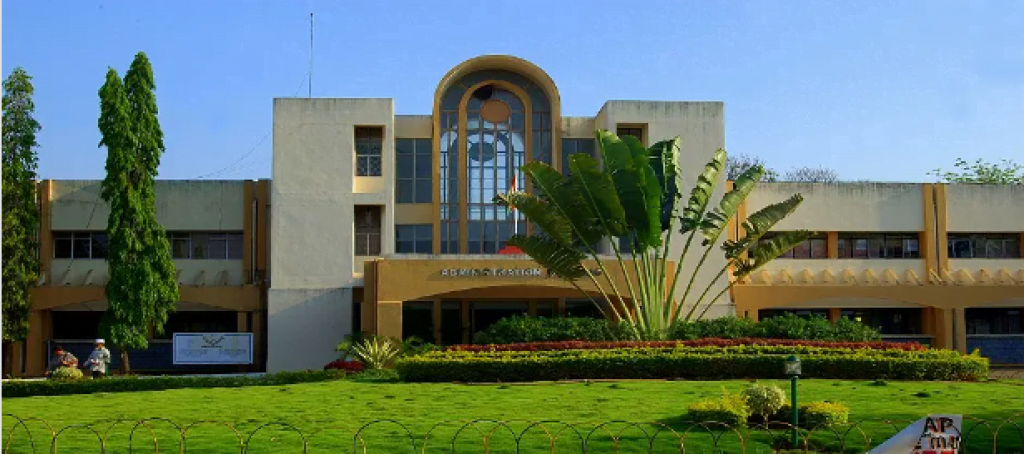NIRF Ranking 2023 Parameters
The National Institutional Ranking Framework (NIRF) is a comprehensive accreditation and ranking system that evaluates institutes and universities in India. NIRF takes into account various parameters to determine the overall performance and quality of educational institutions. In this article, we will explore the parameters considered by NIRF for the 2023 rankings.
Teaching, Learning & Resources (TLR)
Under the parameter of Teaching, Learning & Resources (TLR), NIRF evaluates the effectiveness of the teaching methods employed by the institutions. This includes assessing the quality of classroom instruction, the availability of learning resources such as libraries and technology, and the extent of practical training provided to students. Institutes that prioritize interactive teaching methodologies, encourage critical thinking, and provide ample resources for students are likely to score higher in this parameter.
Student Strength including Doctoral Students (SS)
The Student Strength parameter includes the total number of students enrolled in an institution, including doctoral students. This criterion helps NIRF measure the popularity and reach of an institution among students. A higher student strength indicates that the institute is able to attract a larger number of students, which could be indicative of its reputation and attractiveness among prospective learners.
Faculty-student ratio with emphasis on permanent faculty (FSR)
The relationship between the faculty and student body is a crucial aspect of the learning experience. NIRF assesses the faculty-student ratio, with an emphasis on permanent faculty members, to determine the level of individual attention given to students. A lower faculty-student ratio suggests that the institute is able to provide more personalized attention and guidance to its students.
Combined metric for Faculty with PhD (or equivalent) and Experience (FQE)
The quality of faculty members greatly influences the educational experience offered by an institution. NIRF evaluates the combined metric for faculty with PhD (or equivalent) and experience to gauge the expertise and knowledge possessed by the teaching staff. This parameter takes into account the qualifications and experience of faculty members, ensuring that the institute has a competent and experienced teaching workforce.
Financial Resources and their Utilisation (FRU)
An institution’s financial resources and how efficiently they are utilized is an important factor in determining its overall ranking. NIRF evaluates the financial resources available to an institution and how effectively they are allocated for various educational purposes. This includes funding for research, infrastructure development, and student support services. Institutes that demonstrate sound financial management and effective utilization of resources are likely to score higher in this parameter.
Research and Professional Practice (RP)
Research and Professional Practice is an important criterion for evaluating the intellectual contributions of an institution. NIRF looks into the research output and professional practice of an institution, including collaborations with industries and organizations. This parameter assesses the quantity and quality of research papers published by faculty and students, as well as the impact of research in the scientific and academic communities.
Combined metric for Publications (PU)
Under the Combined metric for Publications parameter, NIRF evaluates the quantity of research articles and publications produced by an institution. This includes both national and international publications, emphasizing the institution’s research output and contributions to the academic community. Institutes that actively contribute to the field of knowledge through their research and publications are likely to receive higher recognition.
Combined metric for Quality of Publications (QP)
While the quantity of publications is important, the quality of publications is equally significant. NIRF assesses the impact of an institution’s research output by evaluating the quality of publications. This includes the reputation and citations received by the published work. Institutes that produce high-quality research and generate impact through their publications are likely to fare well in this parameter.
IPR and Patents: Published and Granted (IPR)
The Intellectual Property Rights (IPR) and Patents parameter evaluates the ability of an institution to generate intellectual property and obtain patents. NIRF examines the number of patents published and granted to the institute, highlighting their contributions to innovation and technology transfer. This parameter recognizes institutions that actively engage in research and development and foster an environment conducive to intellectual property creation.
Footprint of Projects and Professional Practice (FPPP)
The extent of an institution’s involvement in projects and professional practice is evaluated under the Footprint of Projects and Professional Practice parameter. NIRF considers the number and diversity of projects undertaken by the institute, as well as the impact they have on society. This parameter recognizes institutions that actively engage with industries, government bodies, and communities to address real-world challenges.
Graduation Outcomes (GO)
Graduation Outcomes refer to the employability and success of students after completing their education. NIRF evaluates the placement records, average salaries, and entrepreneurial activities of graduates. This parameter reflects an institution’s ability to produce competent graduates who are well-equipped to contribute to their respective fields.
Metric for University Examinations (GUE)
The Metric for University Examinations assesses the performance of students in university examinations. NIRF looks at the average pass percentage and the performance of students in these examinations to gauge the quality of education provided by the institute. A higher pass percentage suggests a strong academic foundation and effective teaching practices.
Metric for Number of Ph.D. Students Graduated (GPHD)
The number of Ph.D. students graduated by an institute is an important parameter in assessing the research potential and academic environment. NIRF considers the number of Ph.D. students who have successfully completed their degrees, highlighting the institute’s commitment to research and its ability to produce skilled researchers.
Outreach and Inclusivity (OI)
Outreach and Inclusivity measures an institution’s efforts to reach out to various sections of society and provide equal opportunities. NIRF evaluates the socio-economic and regional diversity of the student population and the initiatives undertaken by the institute to promote inclusivity. This parameter recognizes institutions that prioritize diversity and foster an inclusive learning environment.
Percentage of Students from Other States/Countries (Region Diversity RD)
The Region Diversity parameter focuses on the geographical diversity of the student body. NIRF examines the percentage of students from other states and countries, highlighting the institute’s appeal and reach beyond its immediate region. A higher percentage of students from diverse regions indicates the institute’s popularity and recognition at a national and international level.
Percentage of Women (Women Diversity WD)
Promoting gender diversity and inclusivity is an important aspect of higher education. NIRF evaluates the percentage of women enrolled in an institution to highlight its efforts towards gender equality. Institutes that actively encourage the enrollment and participation of women are likely to receive recognition in this parameter.
Economically and Socially Challenged Students (ESCS)
Ensuring access and opportunities for economically and socially challenged students is crucial for a fair and inclusive education system. NIRF assesses the percentage of economically and socially challenged students enrolled in an institution, emphasizing its commitment to providing equal opportunities and support to underprivileged sections of society.
Facilities for Physically Challenged Students (PCS)
Accessibility and inclusivity for physically challenged students are paramount in creating an environment that caters to the needs of all learners. NIRF evaluates the facilities and support services provided to physically challenged students, including accessible infrastructure, assistive technologies, and inclusive policies. This parameter recognizes institutions that prioritize the needs of physically challenged students.
Perception (PR) Ranking
Perception plays a significant role in shaping an institution’s image and reputation. NIRF includes a Perception parameter wherein academic peers, employers, and the general public rate and rank institutions based on their perceived quality and performance. This parameter reflects the overall perception of an institution in terms of its academic excellence and industry recognition.
In conclusion, the NIRF ranking parameters for 2023 encompass a wide range of factors that assess the quality, inclusivity, and overall performance of educational institutions in India. By evaluating these parameters, NIRF aims to provide students and stakeholders with valuable insights to make informed decisions about their education and to encourage institutions to continually strive for excellence.
ALSO WATCH : TOP 5 Top Engineering Colleges for CSE | Other than IITs/ NITs/IIITs | Cutoffs, Placements, Average Salary
Entrance Exams for College Admissions
Shiksha has a comprehensive repository of entrance exams wherein students are offered information along the lines of exam eligibility, important dates, exam centres, pattern, syllabus, admit card, answer key, cut-off, admission process, question papers, counselling and results. Aspirants can go through information on popular entrance exams by clicking on the link of the stream of their choice as mentioned below:
- Top Engineering Entrance Exams
- Top Humanities & Social Sciences Entrance Exams
- Top Law Entrance Exams
- Top BBA Entrance Exams
- Top Design Entrance Exams
- Top Hospitality Entrance Exams
- Top Science Entrance Exams
- Top IT & Software Entrance Exams
- Top Mass Communication & Media Exams
- Top Architecture & Planning Entrance Exams
- Top Accounting & Commerce Entrance Exams
- Top Teaching & Education Entrance Exams
- Top Medicine & Health Sciences Entrance Exams
Indian Institute of Science (IISc), Bangalore - Ranking and Courses

Indian Institute of Science (IISc), Bangalore, known for its advanced scientific and technological research, has secured the top spot in the NIRF Ranking 2023 with an impressive score of 83.16. This prestigious institution offers a wide range of science courses through its various divisions, including Division of Biological Sciences, Division of Chemical Sciences, Division of Physical & Mathematical Sciences, Division of Electrical Sciences, Division of Mechanical Sciences, and Division of Interdisciplinary Research.With its focus on cutting-edge research and providing quality education, IISc Bangalore has emerged as one of the leading institutes in India. Students seeking excellence in scientific studies can find a conducive environment at this esteemed institution
Jawaharlal Nehru University (JNU), New Delhi - A Hub for Humanities Education

Jawaharlal Nehru University (JNU), renowned for its humanities courses, has been ranked second in the NIRF Ranking 2023 with a score of 68.92. The University Grants Commission (UGC) has recognized many academic centers at JNU as ‘Centers of Excellence,’ highlighting the university’s commitment to providing quality education in humanities.JNU offers a diverse range of undergraduate and postgraduate courses through its different schools, including the School of Arts & Aesthetics, School of Biotechnology, School of Computational and Integrative Sciences, School of Computer and Systems Sciences, School of Engineering, School of Environmental Sciences, School of International Studies, School of Language, Literature and Culture Studies, School of Life Sciences, Atal Bihari Vajpayee School of Management and Entrepreneurship, School of Physical Sciences, School of Sanskrit and Indic Studies, and School of Social Sciences.
Jamia Milia Islamia, New Delhi - A Central University with an "A" Grade Accreditation

Jamia Milia Islamia (JMI), located in Delhi, is a central university established in 1920. It holds an “A” Grade accreditation from the National Assessment and Accreditation Council (NAAC) and is a member of the Association of Indian Universities (AIU). With a score of 67.73, JMI has secured the third rank in the NIRF Ranking 2023 under the University category.
Jadavpur University, Kolkata - Excellence in Technology, Science, and Arts

Established in 1955, Jadavpur University is renowned for its courses in technology, science, and arts. The university, spread across two campuses – Jadavpur and Salt Lake, offers a wide range of disciplines for students to explore. Jadavpur University achieved the fourth position in the NIRF Ranking 2023, with a score of 66.07.
Banaras Hindu University (BHU), Varanasi - Internationally Recognized Research Hub

Banaras Hindu University (BHU), popular for its research-related courses, especially in humanities and science, stands as an internationally recognized institution. With six centers of advanced studies, several specialized research centers, and extensive research facilities, BHU offers a dynamic environment for students to excel. BHU secured the fifth position in the NIRF Ranking 2023, with a score of 66.85.
Manipal Academy of Higher Education - A Deemed University with Global Reach

Formerly known as Manipal University, Manipal Academy of Higher Education excels in providing a comprehensive range of academic programs. Spread across multiple campuses, including Mangalore, Bangalore, Dubai, and Malaysia, the university offers diverse courses in medical, dental, engineering, management, and more. Achieving the sixth rank in the NIRF Ranking 2023, Manipal Academy of Higher Education boasts a score of 64.98.
Amrita Vishwa Vidyapeetham, Coimbatore - A Hub of Multi-Disciplinary Research

Amrita Vishwa Vidyapeetham, known as one of the top research institutions in India, spans six campuses across Kerala, Tamil Nadu, and Karnataka. With a multitude of departments and schools, such as the School of Arts & Science, School of Ayurveda, School of Biotechnology, School of Business, and many others, Amrita Vishwa Vidyapeetham offers a wide array of courses for students. The institution impressively secured the seventh rank in the NIRF Ranking 2023, with a score of 64.67.
Vellore Institute of Technology, Tamil Nadu - Excellence in Engineering and Technology

Vellore Institute of Technology (VIT), established in 1984, gained university status in 2001. With a focus on self-financed quality education, especially in engineering and technology, VIT has become a reputable institution. VIT achieved the eighth rank in the NIRF Ranking 2023, with a score of 64.33.
University of Hyderabad (UoH), Hyderabad - Premier Postgraduate Research Institution

The University of Hyderabad (UoH) is renowned as a premier postgraduate teaching and research institution in India. With its diverse schools offering various undergraduate and postgraduate programs, UoH provides an enriching academic environment. The institution secured the tenth position in the NIRF Ranking 2023, with a score of 62.09.
Calcutta University, Kolkata - A Pioneer in Higher Education

Calcutta University, established in 1854, is one of India’s oldest universities. With its wide range of undergraduate and postgraduate programs, the university has contributed significantly to higher education. Calcutta University achieved the twelfth rank in the NIRF Ranking 2023, with a score of 61.14.
The NIRF Rankings serve as a reliable benchmark for students looking to pursue higher education in India. These top-ranking institutions exemplify excellence in various fields, ensuring a bright future for students seeking quality education.



